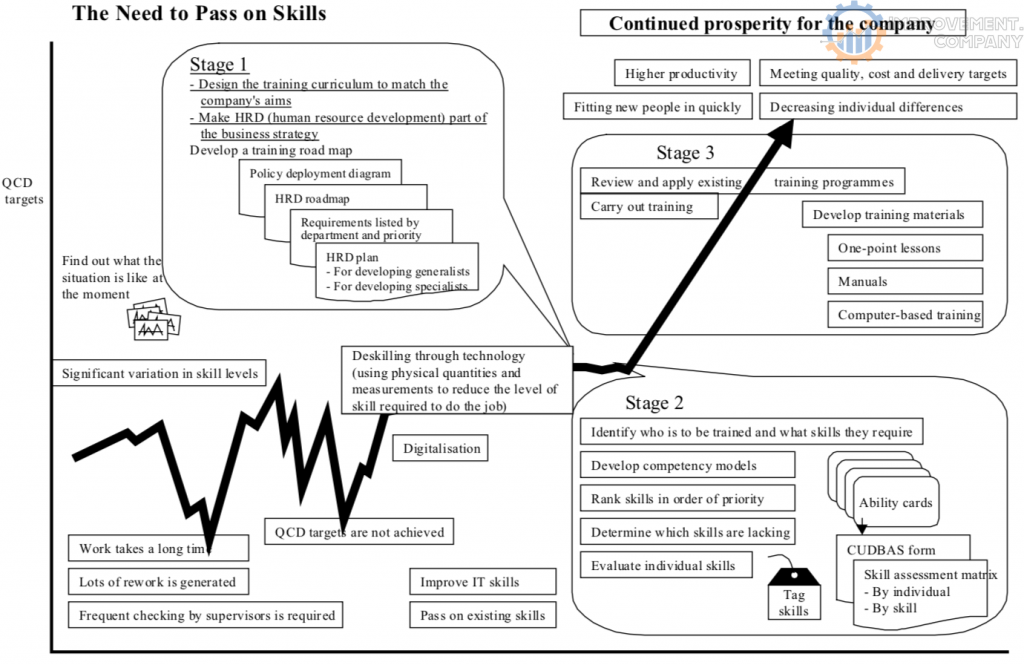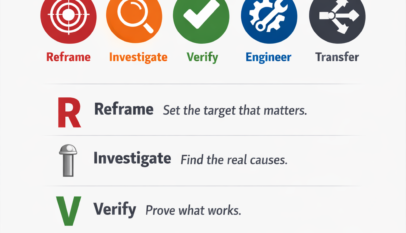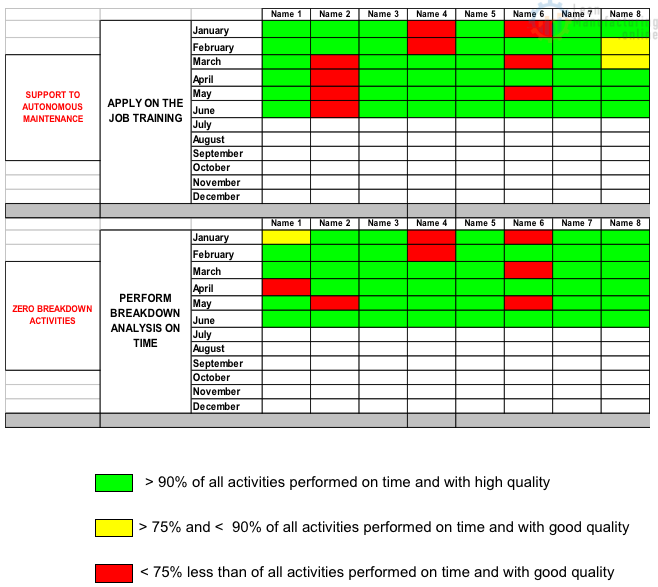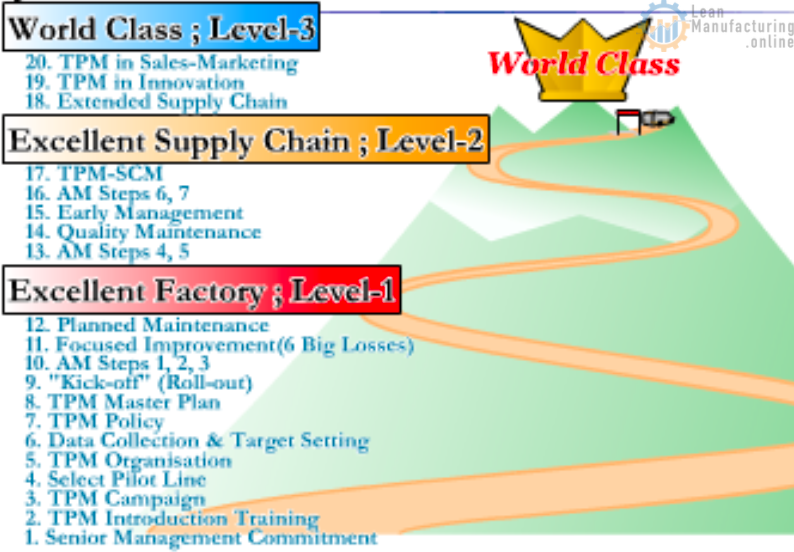Companies progress by developing their employees’ capabilities and maximizing their ability to work effectively. The object of a TPM program is to build a corporate organization and culture that continuously evolves in response to changes in the economic environment, technical innovations, the introduction of more advanced equipment, and the development of more up-to-date management practices – and the first essential requirement for this is to have people who are thoroughly conversant with their equipment and competent at their jobs.
If a company wants to put an effective training and development system in place, the first thing it must do is identify the gap between the knowledge and skills it needs and the knowledge and skills it currently possesses. It must then prepare the training materials, systems and facilities required to close that gap. Finally, after implementing the training, it must review the results. The specific procedure for doing this is as follows:
- Clarify the business strategy
- Sort out what knowledge and skills the company needs (prepare a technology/skill map)
- Assess the current situation (identify what training is needed)
- Prepare training manuals
- Formulate and implement a training plan
- Evaluate and certify the training
This chapter focuses on the operating and maintenance skills training that should be carried out right away, as soon as a TPM program is started. These methods and approaches can also be used in other situations, Of course, it goes without saying that a training and development program can only deliver good results if the methods used are tailored to the work responsibilities, abilities, individual characteristics and specific requirements of individual trainees, see Figure below.

* CUDBAS – Curriculum Development Based on Vocational Ability Structure


















